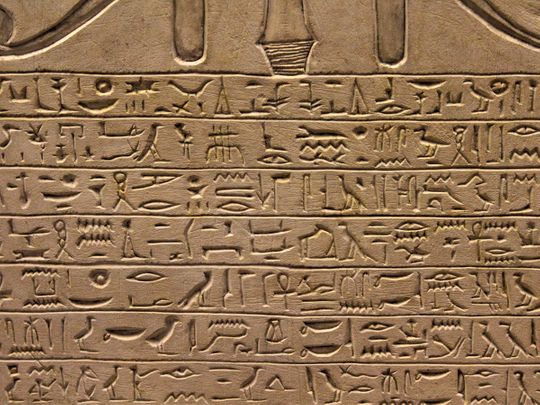
Despite the best efforts of archaeologists and historians, the ancient world is full of unsolved mysteries.
Click start to play today’s Spell It, where some discoveries – whether burial sites or sunken cities – give us cause to ‘exclaim’ in wonder.
With every passing year, new technologies are helping answer questions that have plagued archaeologists for decades. For instance, if an ancient clay pellet is found today, a researcher could use an atomic reactor and other tools to figure out its chemical composition. In the past, this would not have been possible – in fact, many 19th century archaeologists relied simply on their pickaxe and wheelbarrow.
Today, with carbon dating and other technologies, we can now look closer, analyse at microscopic levels and learn how truly sophisticated ancient civilisations once were.
Still, there are some ancient mysteries that stubbornly refuse to give up their secrets. Here are a few worth knowing, according to History.com:
1. Thonis-Heracleion
Once a port city in Egypt, this major trading hub existed even before the founding of nearby city, Alexandria, in 331BC. Both mythical figures, Heracles and Helen of Troy, were supposed to have spent time at Thonis-Heracleion. But tragically, around the second century BC, the city collapsed, possibly because of soil liquification as a result of earthquakes, tsunamis or floods. Thonis-Hercleion was thought to sank into the depths of the Mediterranean Sea. It remained underwater until the early 2000s, when marine archaeologists began to find centuries old objects, like animal sarcophagi, pottery shards, jewellery and coins. They even found 2,400-year-old fruit baskets underneath the waves. What was this port city like? We only know a little, based on what archaeologists have scavenged from this broken-down, real-life Atlantis.
2. Plain of Jars
Imagine a mountainous landscape, covered with stone jars. It exists in northern Laos, where thousands of lichen-covered jars date back to the Iron Age. Made with sandstone, some stand 10 feet tall and weigh several tonnes, leading local legends to call them drinking glasses that were once used by giants. Archaeologists, however, believe they served as funerary urns, although that’s just a theory – and no one knows anything about the civilisation that produced them. Some jars date back to 1240BC, but researchers have been unable to learn more, since many jars stand in fields of unexploded munitions dropped by the US, dating back to the Vietnam War.
3. Cleopatra’s tomb
Cleopatra VII is one of the best-known ancient rulers of Egypt. Serving as its queen, she had affairs with both Julius Caesar and Mark Antony, and later committed suicide in 30BC, following her and Antony’s defeat in the Battle of Actium. Despite reports that they were buried together, the location of their tombs remains a mystery. Some historians think it lies in Alexandria, which was Cleopatra’s capital city, and was lost when a tsunami swept through it in 365AD. Others think it could be in a temple along the Nile Delta, which was dedicated to the deities Isis and Osiris. No one knows for sure. At least, not yet.
Which other ancient mystery has you scratching your head? Play today’s Spell It and tell us at games@gulfnews.com.





